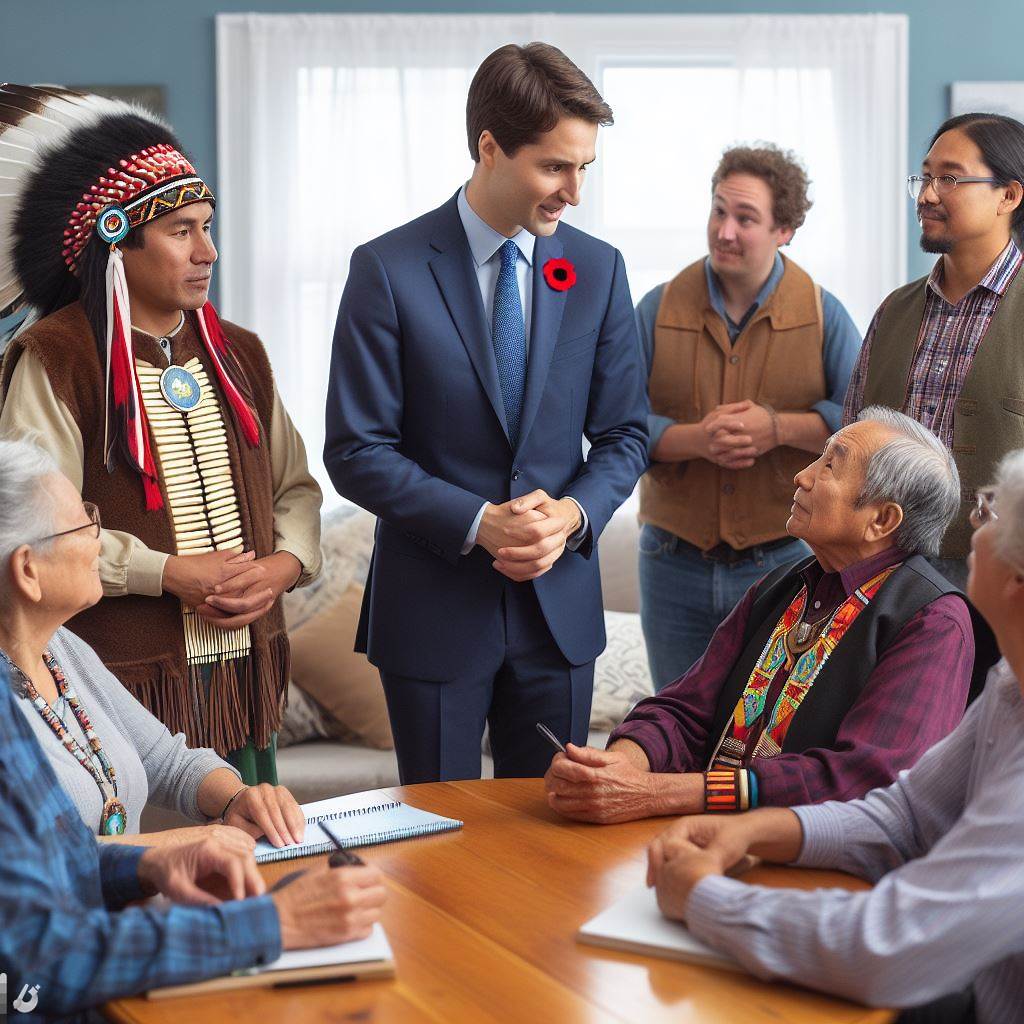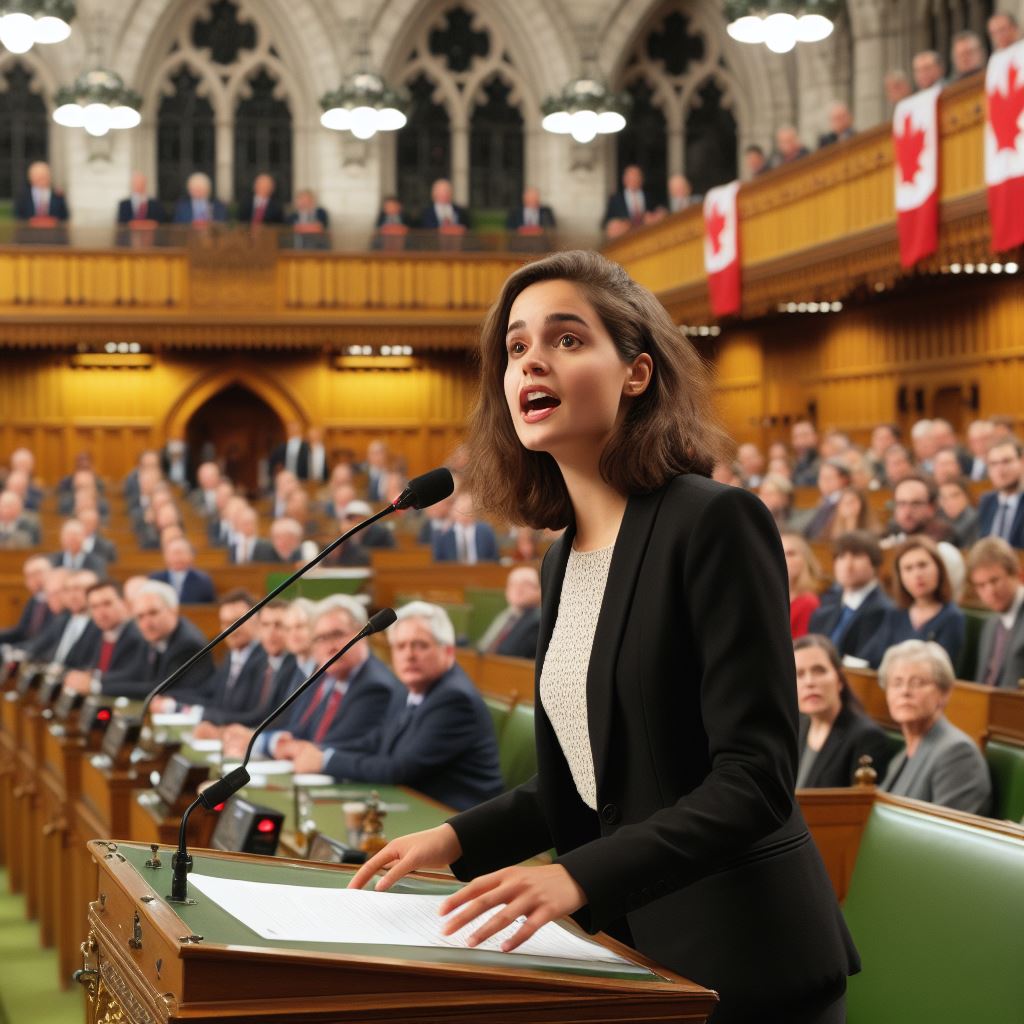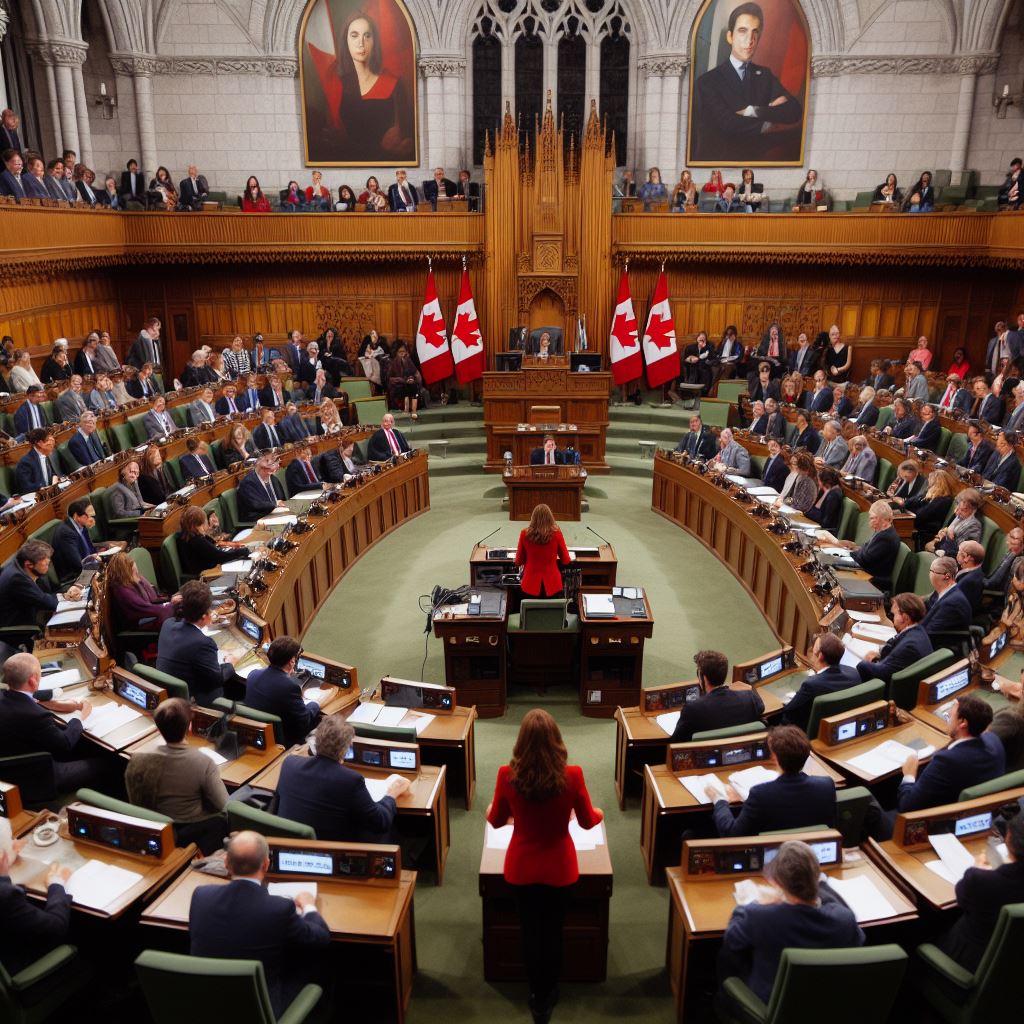Introduction
Ethnic diversity in Canadian politics is an important and relevant topic to discuss.
It highlights the representation and inclusion of different ethnicities in decision-making processes.
In this blog post, we aim to explore the significance of ethnic diversity, its impact on Canadian politics, and the challenges faced.
We will also discuss the progress made and the steps needed to further enhance representation.
By examining these aspects, we hope to shed light on the importance of creating a more diverse and inclusive political space in Canada.
Historical Background
Historical overview of ethnic diversity in Canadian politics
Since the early days of Canadian politics, ethnic diversity has played a significant role in shaping the country’s political landscape.
The history of ethnic diversity in Canadian politics can be traced back to the arrival of European settlers and Indigenous peoples.
In the early years, Canadian politics was predominantly dominated by individuals of European descent, specifically British and French.
This lack of representation for ethnic minorities created challenges and barriers for those seeking political office.
The Challenges Faced by Ethnic Minorities in Obtaining Representation
- Racial Discrimination: Ethnic minorities faced widespread institutionalized racism, making it difficult for them to gain political representation. Systemic barriers prevented them from accessing key positions of power.
- Cultural and Language Barriers: Many ethnic minorities faced language barriers that hindered their political participation. Lack of fluency in English or French limited their ability to engage with mainstream politics.
- Stereotypes and Prejudice: Ethnic minorities often faced stereotypes and prejudice, which undermined their credibility and made it harder for them to build support and gain political traction.
- Lack of Political Mobilization: Ethnic communities initially had limited political mobilization due to social and economic factors, such as limited access to education and economic opportunities.
Key Milestones and Significant Events in Achieving Ethnic Diversity in Canadian Politics
- 1921 – Agnes Macphail: Agnes Macphail became the first woman elected to the House of Commons, advocating for women’s rights and inspiring future generations.
- 1972 – Douglas Jung: Douglas Jung became the first person of Chinese descent elected to the Canadian Parliament, breaking barriers for Asian representation.
- 1988 – Multiculturalism Act: The Canadian government passed the Multiculturalism Act, promoting cultural diversity and recognizing the rights of ethnic minorities.
- 1993 – Kim Campbell: Kim Campbell became Canada’s first female Prime Minister, serving as a role model for women in politics and breaking gender barriers.
- 2011 – Jagmeet Singh: Jagmeet Singh became the first person of Sikh faith to lead a major federal political party, the New Democratic Party (NDP).
These milestones and events were instrumental in promoting ethnic diversity in Canadian politics and challenging the status quo.
They paved the way for increased representation and encouraged a more inclusive political environment.
While progress has been made, challenges persist, and further efforts are needed to ensure true representation of Canada’s diverse population.
It is crucial to address systemic barriers, foster intercultural dialogue, and actively pursue inclusive policies to create a more equitable political landscape.
Ethnic diversity in Canadian politics should continue to be celebrated and supported as a fundamental pillar of an inclusive democracy.
Read: Policy Analysts: Skills and Qualifications
Current State of Ethnic Diversity in Canadian Politics
Statistical data on the representation of different ethnic groups in Canadian politics
According to recent statistics, ethnic diversity in Canadian politics has been on the rise.
The representation of visible minorities in the House of Commons has increased steadily over the years.
As of the 2019 federal election, visible minorities make up around 14% of Members of Parliament.
South Asian, Chinese, and Filipino communities represent the largest ethnic groups in Canadian politics.
The presence of ethnic diversity at various levels of government (federal, provincial, municipal)
Ethnic diversity in Canadian politics is not limited to the federal level but extends to provincial and municipal governments.
Provincial legislatures have also witnessed an increase in the representation of visible minorities.
Municipal governments, especially in major cities like Toronto and Vancouver, have become more diverse.
These cities have seen the election of mayors and councilors from various ethnic backgrounds.
The progress made in recent years and identify any existing gaps or challenges
Significant progress has been made in promoting ethnic diversity in Canadian politics, but challenges remain.
While representation has increased, it still does not fully reflect the diversity of the Canadian population.
Unlock Your Career Potential
Visualize a clear path to success with our tailored Career Consulting service. Personalized insights in just 1-3 days.
Get StartedCertain ethnic groups, such as Black Canadians and Indigenous peoples, are still underrepresented.
Barriers, including systemic racism and unconscious biases, continue to limit the full inclusion of ethnic minorities.
Efforts must be made to address these gaps and ensure equal representation for all communities.
Initiatives to promote ethnic diversity in Canadian politics
Several initiatives have been implemented to promote ethnic diversity in Canadian politics.
Political parties have implemented diversity policies, aiming to increase the nomination of candidates from diverse backgrounds.
Organizations like the Canadian Race Relations Foundation work to foster inclusive political environments.
Community organizations provide support and mentorship programs for individuals from underrepresented communities.
Efforts are being made to engage and encourage young people from diverse backgrounds to participate in politics.
The importance of ethnic diversity in Canadian politics
Ethnic diversity in Canadian politics is crucial for a truly representative democracy.
It ensures that different perspectives and lived experiences are taken into account when making decisions.
It promotes social cohesion and reduces the risk of marginalized communities being left behind.
Ethnic diversity in politics demonstrates Canada’s commitment to inclusivity and equality.
While progress has been made in increasing ethnic diversity in Canadian politics, there are still challenges to overcome.
Representation of marginalized groups, such as Black Canadians and Indigenous peoples, remains a pressing issue.
By implementing inclusive policies, promoting dialogue, and addressing barriers, Canada can strive to achieve true representation and inclusivity in its political landscape.
Read: A Day in the Life of a Policy Analyst
Benefits of Ethnic Diversity in Canadian Politics
The advantages of having a diverse political landscape
- A diverse political landscape allows for a wide range of ideas and perspectives.
- It promotes the inclusion of different voices, cultures, and experiences.
- It encourages dialogue and the exchange of innovative solutions to societal issues.
- It reflects the multicultural nature of Canadian society and strengthens democratic values.
- Diverse political representation fosters a sense of belonging and participation among marginalized communities.
The potential for increased representation and empowerment of different communities
- Ethnic diversity in Canadian politics provides an opportunity for traditionally underrepresented communities to have a voice.
- It allows minority groups to address their unique concerns and advocate for their rights.
- Increased representation fosters a sense of empowerment among marginalized communities.
- Diverse politicians serve as role models for aspiring leaders from underrepresented backgrounds.
- It builds trust and confidence among marginalized communities, leading to increased civic engagement.
The positive impact of diverse perspectives and ideas on policy-making and governance
- Diversity in Canadian politics leads to more comprehensive policy deliberations.
- It brings together diverse viewpoints that enrich decision-making processes.
- Multiple perspectives help identify and address systemic barriers and inequalities.
- The inclusion of different cultural values and experiences improves the quality of governance.
- It ensures policies and legislation are more reflective of the needs and realities of all Canadians.
In fact, embracing ethnic diversity in Canadian politics is crucial for a thriving democracy.
By exploring the advantages of a diverse political landscape, discussing the potential for increased representation and empowerment, and highlighting the positive impact of diverse perspectives on policy-making and governance, Canada can pave the way for a more inclusive and equitable society.
It is essential to continue supporting and fostering diverse political leadership to ensure the voices of all Canadians are heard and their needs are met.
Read: Public Service Job Trends in Canada

Barriers and Challenges
The barriers that prevent full and equal participation of ethnic minorities in politics
When it comes to the full and equal participation of ethnic minorities in Canadian politics, several barriers exist that hinder their involvement.
These barriers can be categorized into systemic, socio-economic, and cultural challenges.
Systemic Barriers
- Lack of diversity within the political establishment perpetuates a lack of representation.
- Power imbalances within political parties lead to limited opportunities for minority candidates.
- Discriminatory nomination processes within political parties prevent minority candidates from being selected.
- The first-past-the-post electoral system often disadvantages minority candidates and parties.
- Limited resources and funding available to minority candidates compared to their mainstream counterparts.
Socio-economic Factors
- Lower socio-economic status of ethnic minorities can hinder their ability to participate in politics.
- Limited access to education and professional networks can impede their political ambitions.
- Language barriers can create difficulties in campaigning and connecting with voters.
- Limited political connections and familial support can be an obstacle in political advancement.
- Negative experiences with the political system or lack of trust in government can discourage participation.
Cultural Challenges
- Cultural norms and expectations may discourage some ethnic minorities from engaging in politics.
- Lack of awareness about the political process and civic responsibilities can be a barrier.
- Cultural stereotypes and biases can influence public perception and hinder minority candidates.
- Misunderstandings and misinterpretations of cultural practices can be exploited for political gain.
- Lack of role models and representation in political leadership can discourage minority participation.
Addressing these barriers and challenges requires the collective efforts of political parties, media, and other stakeholders in promoting diversity and inclusion.
Role of Political Parties
- Political parties need to actively recruit and nominate diverse candidates at all levels of government.
- Creating inclusive nomination processes that consider the unique challenges faced by ethnic minorities.
- Providing resources, mentorship, and training programs to support minority candidates.
- Encouraging the inclusion of diverse voices and perspectives in party decision-making processes.
- Implementing measures to address power imbalances and promote equity within parties.
Role of Media and Stakeholders
- The media should strive for fair and unbiased coverage of minority candidates and their campaigns.
- Increasing visibility and representation of ethnic minorities in political reporting and analysis.
- Providing platforms for minority voices to share their experiences, perspectives, and policy proposals.
- Building partnerships and collaborations with community organizations to engage ethnic minorities.
- Educating the public about the importance of diverse representation and challenging stereotypes.
By addressing these barriers and challenges, Canada can strive towards a more inclusive political landscape that reflects the diversity of its population.
Read: Ethics and Conduct in Public Service
Efforts and Initiatives
Initiatives and programs aimed at promoting ethnic diversity in Canadian politics
There have been several initiatives and programs in Canada aimed at promoting ethnic diversity in politics.
These endeavors are vital to guaranteeing representation of diverse community voices and concerns in decision-making.
Organizations, advocacy groups, and initiatives play a significant role in encouraging diverse political representation.
Political Parties
- Political parties have been actively working to increase diversity within their ranks.
- They have implemented measures such as recruiting candidates from diverse backgrounds.
- These parties often organize training programs to support potential candidates from underrepresented communities.
Advocacy Groups
- Advocacy groups actively lobby for greater ethnic diversity in Canadian politics.
- They raise awareness about the importance of inclusive representation and push for policy changes.
- These organizations offer assistance and resources to individuals from ethnic minority backgrounds aspiring to engage in politics.
Leadership Initiatives
- Numerous leadership programs aim to cultivate emerging leaders from diverse backgrounds.
- Examples include programs like “Daughters of the Vote,” which aims to empower young women interested in politics.
- These initiatives provide mentorship, training, and networking opportunities to aspiring politicians.
Grassroots Movements
- Grassroots movements play a pivotal role in encouraging political participation among ethnic minority communities.
- They mobilize community members, organize forums, and create platforms to amplify their voices.
- These movements also work to address systemic barriers that prevent individuals from minority backgrounds from engaging in politics.
Education and Outreach
- Initiatives aim to improve education and outreach programs focused on diverse communities.
- Campaigns aim to educate individuals about the political process and encourage their active participation.
- These programs provide information on running for office, voting rights, and political representation.
Mentorship Programs
- Mentorship programs have emerged as effective tools for promoting ethnic diversity in Canadian politics.
- Experienced politicians and community leaders offer guidance and support to aspiring candidates.
- These programs help build networks, enhance leadership skills, and navigate the complexities of political careers.
Municipal Initiatives
- Several municipal governments have implemented initiatives to increase diversity in local politics.
- These initiatives reserve seats or establish dedicated councils for ethnic minority representatives.
- They aim to ensure that diverse communities have a say in decisions that directly affect them.
International Inspiration
- Efforts in other countries, such as New Zealand’s “Māori Party,” provide inspiration for promoting ethnic diversity in Canadian politics.
- Looking at successful strategies implemented elsewhere can inform the Canadian context.
- These examples pave the way for the adaptation of effective practices in achieving greater representation.
The diverse representation of ethnic communities in Canadian politics is crucial for a fair and inclusive democracy.
Efforts and initiatives aimed at promoting ethnic diversity play a significant role in achieving this goal.
Canada can foster inclusivity in politics by creating opportunities, raising awareness, and dismantling systemic barriers, ensuring equitable representation for all voices.
Conclusion
This blog post has highlighted the significance of ethnic diversity in Canadian politics.
By recognizing and acknowledging the experiences, perspectives, and voices of individuals from various ethnic backgrounds, we can strive towards achieving a truly representative democracy.
It is crucial to continue promoting inclusivity and equal representation in politics to ensure that all Canadians feel heard and have a seat at the decision-making table.
We should strive to dismantle barriers hindering full political participation for individuals from diverse ethnic backgrounds.
We must encourage and support candidates from all ethnicities and cultures to run for office and take active roles in shaping the future of our nation.
Through fostering diverse political participation, we can enhance our understanding of different communities, bridge divides, and build a stronger, more cohesive society.
Ultimately, by embracing ethnic diversity in Canadian politics, we can work towards building a more inclusive, equitable, and prosperous nation for all.




